Introduction
Have you ever received a call from an unfamiliar number, like 2922643574, and wondered who it might be? You’re not alone. With the increase in mobile phone usage, calls from unknown numbers have become a common experience for many. This article will take you through a comprehensive journey to discover who might be calling from this number, utilizing various methods and resources to identify the mystery caller.
Why Do Unknown Numbers Call?
The Curiosity Behind Unknown Numbers
When you receive a call from an unknown number, it’s natural to feel a mix of curiosity and concern. Who could it be? Is it important? Should I call back? These questions can quickly flood your mind. The truth is, there are many reasons why an unknown number might call you, ranging from legitimate business inquiries to potential scams.
Common Reasons for Unknown Calls
There are several common scenarios where unknown numbers come into play. It could be a telemarketer trying to sell you a product, a political campaign seeking support, or a charity organization asking for donations. On the other hand, it might be a personal call from someone whose number you haven’t saved, or a wrong number dialed by mistake. Understanding these possibilities can help you navigate the situation more calmly.
Understanding Area Codes
Importance of Area Codes in Identifying Calls
Area codes can provide significant clues about the origin of a call. They are the first three digits of a phone number and can indicate the geographical region of the caller. Knowing this can help you narrow down the possibilities of who might be calling you.
Specifics About the 292 Area Code
The area code 292 might not be as familiar as others. It’s important to understand that area codes can be assigned to various regions, and new ones are created as the need arises. Researching the specific area code can give you a better idea of where the call is coming from and help you decide whether to answer or investigate further.
Initial Steps to Identify the Caller
Using Caller ID and Call Logs
One of the first steps in identifying an unknown caller is to check your caller ID and call logs. Your phone might display additional information about the caller, such as the location or the name of the business. Reviewing your call logs can also help you see if the number has called before and identify any patterns.
Searching the Number Online
A quick online search of the number can sometimes yield surprising results. There are many forums and websites where people report unknown numbers and share their experiences. Typing the number into a search engine might lead you to these resources and help you find out if others have received similar calls.
Utilizing Reverse Phone Lookup Services
What is a Reverse Phone Lookup?
A reverse phone lookup is a service that allows you to input a phone number and retrieve information about the caller. This can include the caller’s name, address, and sometimes even additional details like social media profiles. It’s a powerful tool for uncovering the identity of an unknown caller.
Popular Reverse Phone Lookup Services
Several websites and apps offer reverse phone lookup services. Some popular ones include Whitepages, TrueCaller, and Spokeo. These platforms compile data from various sources to provide you with as much information as possible about the number in question. While some services are free, others might require a subscription or a one-time payment for detailed reports.
The Role of Social Media in Identifying Callers
Searching Phone Numbers on Social Media
In today’s digital age, social media can be a goldmine for information. Many people link their phone numbers to their social media profiles. By entering the unknown number into the search bar on platforms like Facebook, LinkedIn, or Instagram, you might be able to find the profile associated with the number.
Common Platforms to Check
Facebook is one of the most common platforms where people link their phone numbers. LinkedIn is also useful, especially if the call is work-related. Instagram can provide insights if the caller is more socially active. Using these platforms can help you piece together information and potentially identify the caller.
Government and Regulatory Resources
How Government Resources Can Help
Government and regulatory bodies often have resources to help you identify and deal with unknown callers. The Federal Communications Commission (FCC) and the Federal Trade Commission (FTC) in the United States have databases and complaint forms for reporting unwanted calls. These resources can be invaluable in your search for the caller’s identity.

Reporting Unknown Numbers
If you suspect that the call is a scam or spam, reporting it to the appropriate authorities can help prevent others from falling victim to the same number. Both the FCC and FTC have easy-to-use online forms for reporting these calls, and doing so contributes to larger efforts to combat fraudulent activities.
Apps and Tools for Identifying Unknown Callers
Caller Identification Apps
Several apps are designed specifically to identify unknown callers. Apps like TrueCaller, Hiya, and Mr. Number offer real-time caller ID and spam protection. These apps can automatically block known spam numbers and provide you with information about incoming calls.
Pros and Cons of Using Such Apps
While caller ID apps can be incredibly useful, they also come with potential downsides. Some apps may require access to your contacts and other personal information, raising privacy concerns. Additionally, while these apps can identify many numbers, they are not foolproof and may sometimes mislabel calls.
Privacy Concerns and Legal Implications
Understanding Privacy Laws
When it comes to identifying unknown callers, it’s essential to understand the privacy laws that govern the use of personal information. Laws like the General Data Protection Regulation (GDPR) in Europe and the Telephone Consumer Protection Act (TCPA) in the United States protect individuals from unauthorized use of their personal data.
Legal Actions Against Unwanted Calls
If you receive persistent unwanted calls, you may have legal recourse. The TCPA, for example, allows individuals to file lawsuits against entities that violate its provisions. Knowing your rights can empower you to take action against unwanted callers and seek damages if necessary.
Protecting Yourself from Scams and Spam
Recognizing Scam Calls
Scam calls can range from phishing attempts to fraudulent offers. Recognizing the signs of a scam call is crucial for protecting yourself. Common indicators include requests for personal information, pressure to act quickly, and offers that seem too good to be true.
Steps to Protect Yourself
To protect yourself from scams, never share personal information over the phone unless you are certain of the caller’s identity. Use caller ID and reverse phone lookup services to verify unknown numbers. Additionally, consider blocking numbers that you suspect are fraudulent.
The Importance of Reporting Spam Numbers
How Reporting Helps Others
Reporting spam numbers to authorities and relevant platforms can help protect others from falling victim to the same scams. When you report a number, it is added to databases that warn other users about potential threats.
Agencies to Report To
In the United States, the FTC and FCC are the primary agencies for reporting spam calls. Additionally, you can report numbers to your phone carrier and the apps you use for caller identification. These reports help build comprehensive databases that benefit everyone.
Blocking Unwanted Calls
How to Block Numbers on Different Devices
Blocking unwanted calls is a straightforward way to protect yourself from harassment. Most smartphones have built-in features that allow you to block numbers. On iOS devices, you can block a number from your call log by selecting the “Block this Caller” option. On Android devices, the process is similar, usually involving a “Block” or “Report Spam” option in the call settings.
Benefits of Blocking Unknown Numbers
Blocking unknown numbers can provide peace of mind and reduce the number of interruptions you experience. It also helps you avoid potential scams and spam, making your phone use more pleasant and secure.
Personal Experiences and Anecdotes
Stories from People Who’ve Dealt with Unknown Calls
Many people have had experiences with unknown callers that range from mildly annoying to genuinely concerning. For instance, one individual received repeated calls from a number they didn’t recognize, only to discover it was a long-lost friend trying to reconnect. Another person reported a more unsettling experience with a scammer who attempted to steal their personal information.
Lessons Learned from These Experiences
These personal stories highlight the importance of staying vigilant and taking proactive steps to identify unknown callers. They also emphasize the value of using available resources, such as reverse phone lookups and caller ID apps, to protect yourself from potential threats.
Future Trends in Caller Identification
Technological Advancements
The future of caller identification looks promising, with advancements in technology continually improving our ability to identify and block unwanted calls. Artificial intelligence and machine learning are being integrated into caller ID systems to better detect and filter spam calls.
Predictions for the Future of Call Identification
As technology evolves, we can expect more sophisticated methods of caller identification. This might include more accurate real-time identification, enhanced privacy protections, and better integration with other digital services to provide comprehensive protection against unwanted calls.
Conclusion
Discovering who called from a number like 2922643574 can be a challenging but manageable task with the right tools and knowledge. By utilizing caller ID, reverse phone lookups, social media, and regulatory resources, you can identify unknown callers and protect yourself from scams and spam. Remember to stay vigilant, report suspicious numbers, and use available technology to your advantage. With these strategies, you can take control of your phone calls and ensure a safer, more secure communication experience.
Also read this; 1733964680
FAQs
1. How can I find out who called me from 2922643574?
To find out who called you from 2922643574, you can use caller ID, perform an online search, use reverse phone lookup services, and check social media platforms.
2. What is a reverse phone lookup service?
A reverse phone lookup service allows you to enter a phone number and retrieve information about the caller, such as their name, address, and sometimes even social media profiles.
3. Are there any free resources to identify unknown callers?
Yes, there are free resources available, such as online forums, social media searches, and some reverse phone lookup services. However, more detailed information might require a subscription or payment.
4. How can I block unknown numbers on my phone?
On most smartphones, you can block unknown numbers by going to your call log, selecting the number, and choosing the “Block” or “Report Spam” option.
5. What should I do if I suspect a scam call?
If you suspect a scam call, do not share any personal information. Use caller ID and reverse phone lookup services to verify the number, and consider blocking the number. You should also report the number to the relevant authorities, such as the FTC or FCC.






